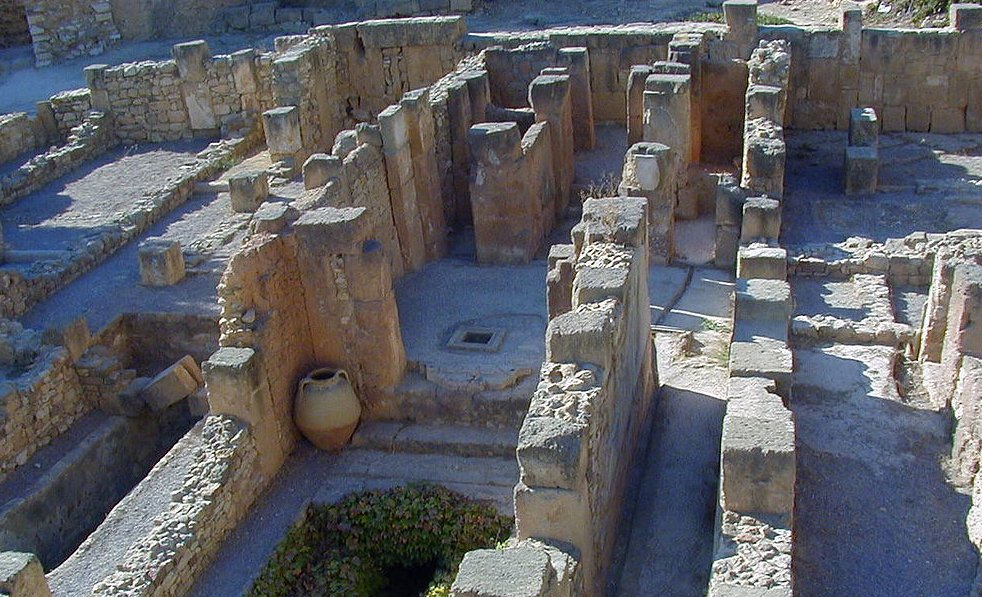Carthage: Prosperous Phoenician Colony That Became Dominant Power In The Western Mediterranean
A. Sutherland - AncientPages.com - The ruins of Carthage (its Phoenician name means 'Kart-hadasht '("new town")) are located approximately 18 km northeast of Tunis on the coast of North Africa and are surrounded by modern residences and beautiful gardens.
Modern reconstruction of Punic Carthage. The circular harbor at the front is the Cothon, the military port of Carthage, where all of Carthage's warships (Biremes) were anchored. Image credit: damian entwistle - CC BY-SA 2.0
An ancient legend strongly associates this place; it tells the story of the great city of Carthage, founded here nearly 3000 years ago.
This beautiful legend attributes the founding of Carthage to Elissa (Dido), a Phoenician princess from Tyre, sister of the King of Tyre - Pygmalion. Astonishingly, much of this story is historically accurate.
When Pygmalion killed Dido's husband, she and her children fled to North Africa.
Dido asked the Berber king Iarbas for a small bit of land for temporary refuge until she could continue her journey. Iarbas agreed to give her only as much land as could be encompassed by an oxhide. A clever woman had cut the skin into thin strips so that she had enough to encircle an entire nearby hill, which was afterward named Byrsa ('hide').
Carthage ruins. Image: Wikimedia commons
She founded Carthage on this piece of land. Many of the local Berbers joined the settlement, and both Berbers and envoys from the nearby Phoenician city of Utica urged the building of a city.
According to historical records, Carthage was not the Phoenicians' first colony, but in its early days, it became the largest and most famous city. It was an important political and commercial center, but researchers questioned the date of the foundation of Carthage.
Archaeological data indicate that the last quarter of the 8th century BC has yet to be discovered, an entire century later than the traditional foundation date.
The location of Carthage was very convenient and safe; it offered access to the Mediterranean but was shielded from violent storms. The city was well-protected and easily defensible. The ancient citadel, the Byrsa, was on a low hill overlooking the sea.
Some of the earliest tombs have been found there; the Byrsa area was once adorned with a large temple dedicated to Juno, Jupiter, and Minerva, and near it stood a temple to Asclepius. Also on the Byrsa site stood an open-air entrance, from which the finest Roman sculptures at Carthage have survived.
Baths of Antoninus, Carthage. Image: Wikimedia Commons
Surrounding Carthage were walls "of great strength," said in places to rise above forty feet (13 m) and be almost thirty feet (10 m) thick. To the west, three parallel walls were built. The walls encircled the city for about thirty-three kilometers.
The heights of the Byrsa were additionally fortified, this area being the last to succumb to the Romans in 146 BC.
No remains of Carthage's domestic and public buildings were unearthed. The city experienced its peak power in the third century BC. At the same age, however, Carthage was engaged in a series of wars with Rome, which ended with the city's destruction in 146 BC during the Third Punic War.
The First Punic War (264 - 241 BC) was a complete disaster for Carthage, causing it to lose the island of Sicily.
In the second Punic War (218 - 202 BC), Hannibal famously led his army and elephants over the Alps to attack the Romans on their soil. For many years, he led his victorious army up and down what is known today as Italy. On every battlefield, Hannibal defeated the Roman legions. Finally, he was lured for alleged peace negotiations to North Africa, and the Romans were able to beat him.
Punic ruins of Byrsa, Carthage. Image via Wikimedia commons
The third and final Punic War (149 - 146 BC) led to Rome's destruction of Carthage. That devastating defeat ended Carthage's brilliant time of glory. The city returned once more to the peaceful cultivation of its colonies and sea trade.
After decades, Carthage was reborn as a Roman colony; more precisely, the Roman province of "Africa" (with its capital in Carthage) became the granary of Rome and experienced another period of flowering until the fall of the Empire.
Throughout history, the city passed from hand to hand. After the Romans, the Byzantines came. In the year 439, Carthage was plundered by the Vandals, who, ten years earlier, had appeared in North Africa and made it to his capital. In 534, the city was recaptured by the Byzantine army of Belisarius. In the seventh century, the Arabs appeared in the regions, and in the sixteenth century, Carthage was in the hands of the Ottoman Empire.
Written by – A. Sutherland - AncientPages.com Senior Staff Writer
Updated on March 28, 2024
Copyright © AncientPages.com All rights reserved. This material may not be published, broadcast, rewritten or redistributed in whole or part without the express written permission of AncientPages.com
Expand for referencesReferences:
Polybius: The Histories
Goldsworthy Adrian, The Fall of Carthage: The Punic Wars 265-146BC
More From Ancient Pages
-
 Archaeologists Discover Long-Lost Scottish Monastery Of Deer And Solve An Old Manuscript Mystery
Archaeology | Nov 21, 2023
Archaeologists Discover Long-Lost Scottish Monastery Of Deer And Solve An Old Manuscript Mystery
Archaeology | Nov 21, 2023 -
 Controversial Unexplained Ancient Mystery In Mongolia – Discovery Of Remarkable Secrets Hidden In Artificial Cave – Part 1
Ancient Mysteries | May 1, 2018
Controversial Unexplained Ancient Mystery In Mongolia – Discovery Of Remarkable Secrets Hidden In Artificial Cave – Part 1
Ancient Mysteries | May 1, 2018 -
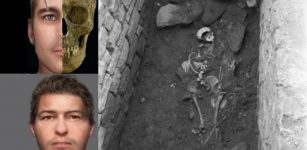 Mystery Of An Edinburgh Crypt – Secrets Of Warriors Of Dark Ages In Scotland – Revealed
Archaeology | Oct 3, 2015
Mystery Of An Edinburgh Crypt – Secrets Of Warriors Of Dark Ages In Scotland – Revealed
Archaeology | Oct 3, 2015 -
 Ancient Secrets Of Polish Ciemna Cave Inhabited By Humans 120,000 Years Ago
Featured Stories | Nov 22, 2016
Ancient Secrets Of Polish Ciemna Cave Inhabited By Humans 120,000 Years Ago
Featured Stories | Nov 22, 2016 -
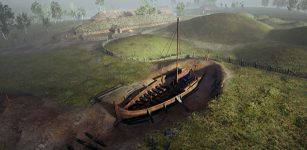 Archaeologists Reveal 12 Exciting Finds From The Gjellestad Viking Ship Dig
Archaeology | May 28, 2022
Archaeologists Reveal 12 Exciting Finds From The Gjellestad Viking Ship Dig
Archaeology | May 28, 2022 -
 On This Day In History: Treaty Of Seville Signed – On Nov 9, 1729
News | Nov 9, 2016
On This Day In History: Treaty Of Seville Signed – On Nov 9, 1729
News | Nov 9, 2016 -
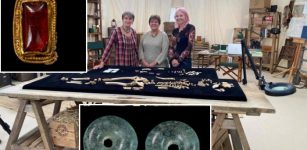 More Anglo-Saxon Burials And Artifacts Found In Lincolnshire, UK
Archaeology | Jan 11, 2024
More Anglo-Saxon Burials And Artifacts Found In Lincolnshire, UK
Archaeology | Jan 11, 2024 -
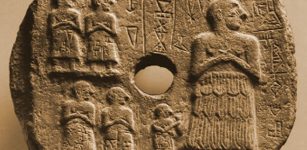 Sumerian Plaque Dedicated To King Ur-Nanshe, The Founder Of The 1st Dynasty Of Lagash
Artifacts | Dec 5, 2018
Sumerian Plaque Dedicated To King Ur-Nanshe, The Founder Of The 1st Dynasty Of Lagash
Artifacts | Dec 5, 2018 -
 Ancient DNA Reveals Surprising Stories About Migrations And Genetic Mixing Of Our Ancestors
Archaeology | Feb 22, 2018
Ancient DNA Reveals Surprising Stories About Migrations And Genetic Mixing Of Our Ancestors
Archaeology | Feb 22, 2018 -
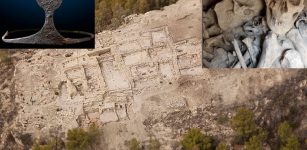 El Argar Civilization: Bronze Age Palace And Grave Goods Unearthed In Spain’s La Almoloya
Archaeology | Oct 15, 2014
El Argar Civilization: Bronze Age Palace And Grave Goods Unearthed In Spain’s La Almoloya
Archaeology | Oct 15, 2014 -
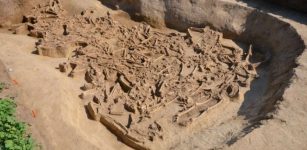 Gruesome Discovery Of Headless Bodies In Vráble, Slovakia – Remains Of Stone Age Cult Victims Unearthed
Archaeology | Sep 24, 2022
Gruesome Discovery Of Headless Bodies In Vráble, Slovakia – Remains Of Stone Age Cult Victims Unearthed
Archaeology | Sep 24, 2022 -
 The Word Salary Has Roots In Ancient Rome And History Of Salt
Ancient History Facts | Jun 29, 2016
The Word Salary Has Roots In Ancient Rome And History Of Salt
Ancient History Facts | Jun 29, 2016 -
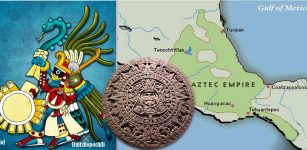 Why The Aztecs Called Themselves ‘Mexica’
Ancient History Facts | Jan 13, 2018
Why The Aztecs Called Themselves ‘Mexica’
Ancient History Facts | Jan 13, 2018 -
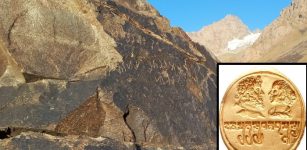 Enigmatic Ancient ‘Unknown Kushan Script’ Deciphered By Scientists
Archaeology | Jul 13, 2023
Enigmatic Ancient ‘Unknown Kushan Script’ Deciphered By Scientists
Archaeology | Jul 13, 2023 -
 Remains Of 1,600-Year-Old Roman City Of Neapolis Devastated By A Tsunami Discovered
Archaeology | Sep 7, 2017
Remains Of 1,600-Year-Old Roman City Of Neapolis Devastated By A Tsunami Discovered
Archaeology | Sep 7, 2017 -
 On This Day In History: Battle Of Durnstein Was Fought On The River Danube – On Nov 11, 1805
History | Nov 11, 2016
On This Day In History: Battle Of Durnstein Was Fought On The River Danube – On Nov 11, 1805
History | Nov 11, 2016 -
 ‘Bad King John’ Of England: His Lost Treasures Have Never Been Found
Featured Stories | Apr 6, 2016
‘Bad King John’ Of England: His Lost Treasures Have Never Been Found
Featured Stories | Apr 6, 2016 -
 A Remarkably Well-Preserved Wooden Well Dating Back To The Bronze Age Uncovered In Benson, Oxfordshire
Archaeology | May 10, 2024
A Remarkably Well-Preserved Wooden Well Dating Back To The Bronze Age Uncovered In Benson, Oxfordshire
Archaeology | May 10, 2024 -
 Ancient DNA’s Analysis Delivers Crucial Clues To Migratory Patterns During The First Millennium AD
DNA | Jan 2, 2025
Ancient DNA’s Analysis Delivers Crucial Clues To Migratory Patterns During The First Millennium AD
DNA | Jan 2, 2025 -
 Mysterious Bronze Age Face Carved In Rock And Rare Artifacts Found In Kazakhstan
Archaeology | Aug 12, 2024
Mysterious Bronze Age Face Carved In Rock And Rare Artifacts Found In Kazakhstan
Archaeology | Aug 12, 2024




